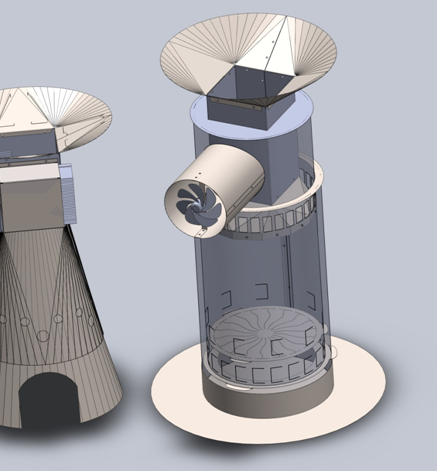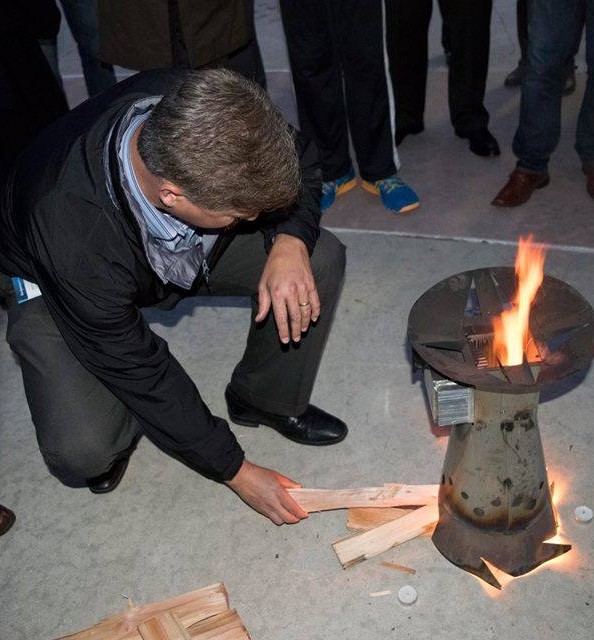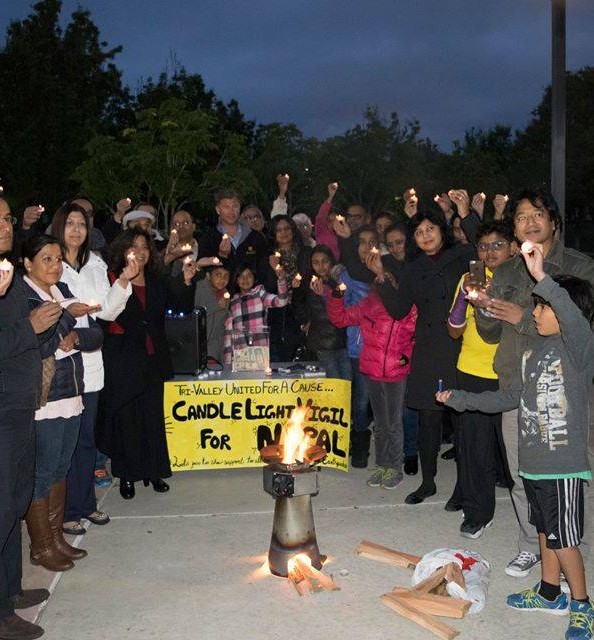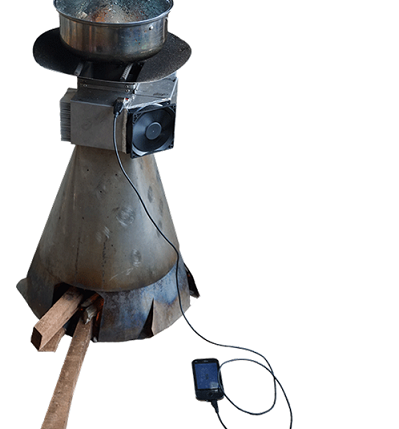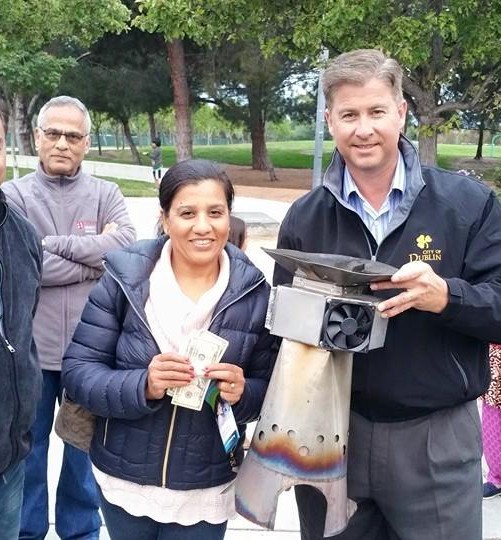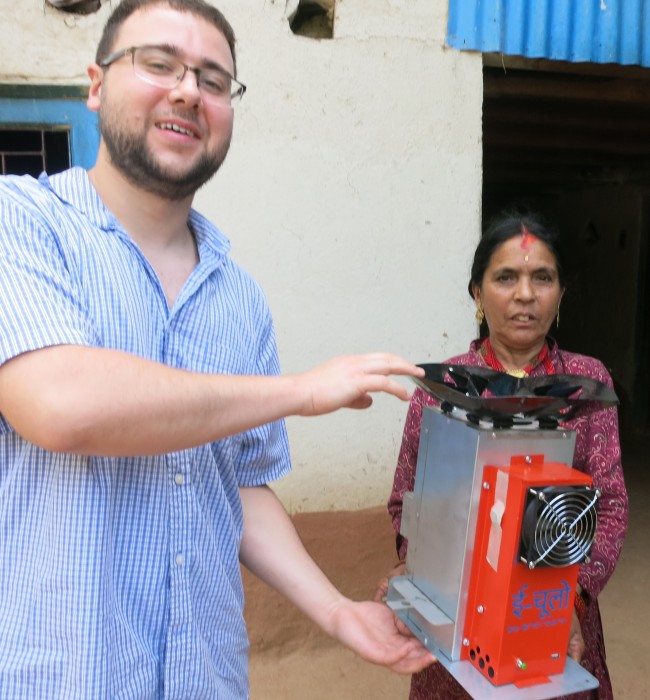“Bay Area Nepali Women Organization (non-profit Organization)” is collaborating with a University of California Berkeley alumni initiated start-up Energant (www.energant.com) to provide clean cooking, lighting and powering solutions (K2) to earthquake-affected population Bay Area Nepali Women Organization will be managing the assembly, organize and distribute these stoves. Different organization has already pledged 250 units of these stoves.
Air pollution due to cooking on an inefficient stove and smoke from simple kerosene wick lamp is a leading cause of morbidity and mortality in Nepal. Studies conducted in Nepal have documented chronic obstructive pulmonary disease (COPD), Tuberculosis, Cataract in women, and pneumonia in children from use of simple biomass cookstove (Bates et al., 2013; Pokhrel et al., 2013; Pokhrel et al., 2010; Pokhrel et al., 2005). Study has also documented Tuberculosis disease from use of kerosene wick lamp (Pokhrel et al., 2010). Therefore, there is a need to expand clean cooking and lighting solutions to reduce future health problems in Nepal. In addition to clean cooking and lighting solutions, at present people are also in need of technology that provide off grid power to charge their cell phones and LED lighting.
The K2 technology was first developed in 2013 and has since been refined in its cooking/heating effectiveness, cost, and utility to end users. These refinements are the product of over two years of prototype iterations, field testing, and international piloting (See picture below).
The core technology is comprised of a forced convection vortex chamber where the ultraclean combustion occurs followed by secondary air injection. The technology depends on the use of TEG (thermoelectric generator) modules to generate electricity from the heat of the fire while powering a fan. Extra energy is sent for storage to an internal rechargeable battery for the charging of small electronic devices, such as cell phones. K2 reduces the fuel usage by as much at 55% and the carbon monoxide and smoke is reduced by as much as 95%.
These stoves are pilot tested in Philippines during 2013 disaster. Please visit http://www.energant.com for more information. Three units of these stoves are shipped to Nepal and tested at Alternative Energy Promotion Center, Khumaltaar, Lalitpur, Nepal http://www.aepc.gov.np.
Cross-section of KleanCook on left and K2 on right
Why Support Bay Area Nepali Women Organization’s (BANWO) Clean Cook Stove Initiative?
BANWO has been serving the Bay area for past 5 years teaching Nepali language and culture to the children 4 ½ and up. Looking at the current crisis in Nepal from the recent earthquake we have refocused our effort serving the Bay area and helping the people-mainly women and children of Nepal affected by the earthquake.
The earthquake of April 25 2015 and series of aftershocks in Nepal have caused multiple damages. According to the Nepal government, earthquake has killed at least 8,700 people, displaced about 8 million people, and damaged 756,000 houses and other buildings. On May 12, 2015, another powerful earthquake of 7.3 magnitudes struck Nepal. The second earthquake has further worsened already devastating situation. Many people are living in makeshift camps, are traumatized and going through anxiety and fear.
So far we have sent the immediate relief; food, tents for shelter, and medicine. We have also set up a mobile health camp to serve the village that had not received any medical help. We have partnered with grassroots nonprofit organizations in Nepal who carries out the operation in Nepal in the ground.
Now we have pledged to send 1000 clean cook stoves to the villages of Nepal that were hard hit by the Earthquake.
Why Clean Cook Stove?
Problem with traditional cooking and lighting:
- At present many people are cooking on three stone fire or simple stoves in the Makeshift Tents exposing themselves to harmful smoke.
- Many people are using simple wick lamp to meet the lighting need.
Air pollution due to cooking on an inefficient stove and smoke from simple kerosene wick lamp is a leading cause of morbidity and mortality in Nepal. Studies conducted in Nepal have documented chronic obstructive pulmonary disease (COPD), Tuberculosis, Cataract in women, and Pneumonia in children from use of simple biomass cookstove (Bates et al., 2013; Pokhrel et al., 2013; Pokhrel et al., 2010; Pokhrel et al., 2005). Study has also documented Tuberculosis disease from use of kerosene wick lamp (Pokhrel et al., 2010).
Solutions
- There is need for clean cooking and lighting solution: There is a need to expand clean cooking and lighting solutions to reduce future health problems among earthquake victims and additional 4.2 million families who are at present cooking on simple biomass cookstove throughout Nepal. In addition to clean cooking and lighting solutions, at present people are also in need of technology that provide off grid power to charge their cellphone.
- Cost-effective and Sustainable Solutions: The cost of our clean cook stove from manufacturing (in Nepal), distribution, consumer satisfaction, training, education and air quality monitoring is $80. The cost of similar stove in the US is $130 without tax. Also, compared with the cost of installing household level 10 watt solar system to light 3 LED lamps, which is about $70-$80 in Nepal, this stove also provide enough power to light 3 lamps; adequate energy to cook meal three times, and powering need to charge cell phone. Therefore, this will help avoid additional cost of installation of solar system for lighting and charging cellphones. In Nepal, about 72% of people have access to cellphone but the supply of electricity is very erratic. Therefore, utility from free electricity can motivate the rural households to adopt this technology.
- 3. Scalability of Technology: In Nepal, an estimated 90% of rural population uses solid fuels for cooking and heating. Similarly, only about 76% of people have access to electricity. According to the World Health Organization, approximately 4.2 million families are affected by harmful smoke from inefficient cooking and heating activities, resulting in 20 thousands deaths per year. Nepal government has announced clean cooking solutions for all (households) by 2017. The new solutions, however, require that stove should meet at least the ISO type, tier 3 standards for indoor emissions. Existing locally available stove technology (simple mud stove with chimney) does not meet this standard. On the other hand BANWO’s proposed stove technology meets this standard. Therefore, there is an opportunity to scale-up this technology throughout Nepal—to 4.2 million families.
Why fund BANWO?
- 1. BANWO is collaborating with a University of California Berkeley alumni initiated start-up called Energant, a Bay Area based company to provide clean cooking, lighting and powering solutions to earthquake affected population.
Each and every level of work done from distribution to installation and also getting user feedback is accountable in this initiative by BANWO where as the Prime minister fund will not be accountable in this level. And, Prime minister Relief fund and Red Cross are working more on the relief effort at this point and will not cover this cause that BANWO is undertaking.
This is the time to rebuild: why not provide the solution during this rebuilding effort that is more sustainable and has long term implication.
This is the time to reconstruct: why not reconstruct in a way it generates employment in the long run so that people are self-sufficient.

